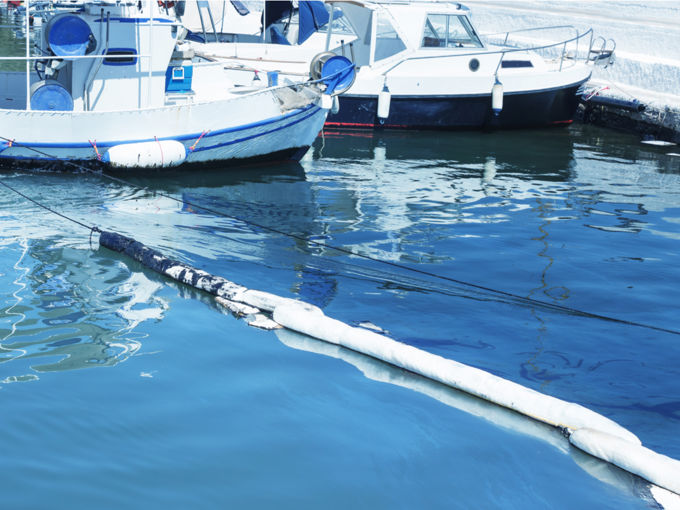
Oil Spills: The Clean Water Act To The Oil Pollution Act Of 1990
A tugboat overturns in a waterway adjacent to a small shipyard off of the Eastern Branch of the Elizabeth River, near the Campostella Bridge in Norfolk, spilling an estimated 1,000 gallons of diesel fuel into the river. Firefighters who specialize in hazardous substance releases, the U.S. Coast Guard and the Virginia Department of Environmental Quality respond to the scene. The shipyard owner/operator is criticized for his failure to notify the National Response Center. He lacks the equipment to contain the spill and recover the oil from the water, so he hires a commercial firm that specializes in oil spill emergency response. The Department of Environmental Quality commences a civil enforcement action against the shipyard owner/operator, so he retains legal counsel. The result of the enforcement action is a $7,361.00 fine plus the requirement that he prepare an Oil Discharge Contingency Plan and submit it to the Department of Environmental Quality. The plan must describe techniques and practices the shipyard will implement to prevent future oil spills and to properly contain and clean them up, should another occur. The shipyard owner/operator hires a consultant to prepare the Oil Discharge Contingency Plan, acquires new equipment, modifies its operations and trains its personnel to implement the plan’s techniques and practices.
Estimated out of pocket cost of the spill to the shipyard owner/operator: $50,000.00.
Introduction Of The Clean Water Act
It was not always this way.
As late as the 1960s few, if any, negative consequences attached to people who discharged pollution into the water. Two notorious disasters changed all that. In January 1969, a “blowout” at a Union Oil Company oil platform six miles offshore in the Pacific Ocean released 200,000 gallons of crude oil over an eleven-day period. The oil marred 35 miles of coastline near Santa Barbara, California. In June 1969, the Cuyahoga River burst into flames in Cleveland, Ohio, after sparks from a passing train set fire to oil-soaked debris floating on the surface of the water.
The "change" came in 1972 when Congress enacted, and President Nixon signed, the Clean Water Act (“CWA”). CWA section 1321, 33 USC §1321 created liability (in certain circumstances) for persons who discharge “oil or hazardous substances into or upon the navigable waters of the United States.” The 1972 CWA, together with the 1977 amendments, created specific crimes for oil and hazardous substance pollution of U.S. navigable waters, created administrative and civil penalties and empowered the U.S. Government to force the discharger to pay the government for the cleanup costs.
The CWA provided no remedy for private persons, but the statute made it clear that it did not preempt existing remedies for damage to property, such remedies consisting mainly of nuisance, negligence or trespass claims under state law. There are, however, substantial barriers to victim recoveries under state law, such as legal defenses, statutes of limitation, the corporate form and the burdens of proof that favor those responsible for the spill.
Filling In Gaps With Oil Pollution Act of 1990
The inadequacies in CWA section 1321,33 U.S.C. §1321 were exposed in March 1989, when the tanker EXXON VALDEZ grounded on Bligh Reef in Alaska's Prince William Sound, rupturing its hull and spilling nearly 11 million gallons of Prudhoe Bay crude oil into a remote, scenic and biologically productive body of water. State law remedies were a poor way to make private persons and businesses whole given the massive economic impact this spill caused to the tourism industry and to the fishing industry. Congress responded with the Oil Pollution Act of 1990 (OPA 90). In some respects OPA 90 is more limited than the CWA in that the liability it imposes is limited to the discharge of “oil,” whereas the CWA creates liability for the discharge of “oil and hazardous substances.” However, OPA 90, 33 U.S.C. §2702, goes beyond CWA section 1321, 33 U.S.C. §1321 in several significant respects:
- OPA 90 allows private persons (not just the government) to recover clean-up costs;
- OPA 90 allows private persons and businesses to recover money damages from the discharger for injury to real or personal property caused by the oil spill; and
- OPA 90 allows private persons and businesses to recover money damages from the discharger for lost profits caused by the oil spill.
Some of the states created new legislation similar in many respects to OPA 90. Virginia, for example, enacted the Virginia Disharge of Oil into Waters law found at Va. Code §§ 62.1-44.34:14 to 62.1-44.34:23.
Application of Acts Present Day
Return with me now to the owner/operator of the small shipyard with his 1,000-gallon spill and his estimated $50,000.00 out of pocket cost, which could have been much higher. CWA section 1321(b)(5), 33 U.S.C. §1321(b)(5) makes the failure to report an oil or hazardous substance spill a felony punishable by a fine and/or five years of imprisonment. The shipyard owner/operator was fortunate that he was not called upon to reimburse the City of Norfolk for sending to the scene of the oil spill its firefighters who specialize in hazardous substance releases, as this is a “removal cost” recoverable under both CWA section 321, 33 U.S.C. §1321(f) and OPA 90, 33 U.S.C. §2702(b)(1). He was similarly fortunate to have escaped his obligation to reimburse the United States for the cost of sending USCG personnel and equipment to the scene, and his obligation to reimburse the Commonwealth of Virginia for the cost of its personnel. No bill was presented to him for injury to fish, waterfowl, or other wildlife (or plants), even though OPA 90, 33 U.S.C. §2702(b)(2)(A) empowers the United States to recover natural resource damages from him. If his spill had injured personal property of others (e.g. coated the hulls of other nearby vessels triggering the need to clean them) or real estate belonging to others, OPA 90,33 U.S.C. §2702(b)(2)(B) would have made him liable to those persons for the losses caused. If his oil spill had caused a business interruption at any of the neighboring businesses, OPA 90, 33 U.S.C. §2702(b)(2)(E) would have required him to reimburse his neighbors for their loss of profits or impairment of earning capacity.
If you own or operate a shipyard, it is essential to manage the risks associated with the discharge of oil and hazardous substances. Jim Lang, a Pender & Coward shareholder, focuses his practice on this and other matters relating to water and environmental law. Contact him with questions by calling (757) 777-6382 or by sending an email to jim@fhp-va.com.
